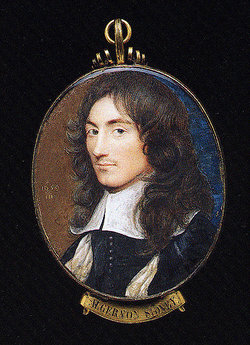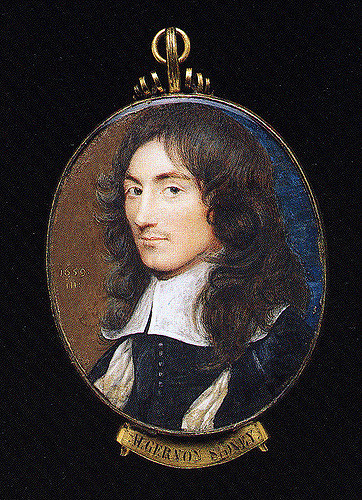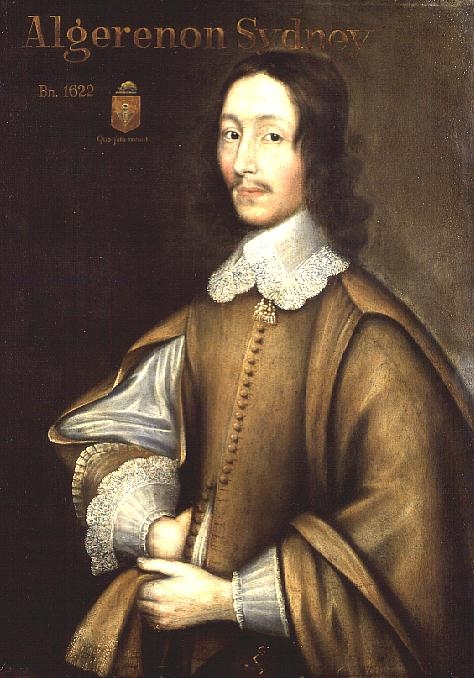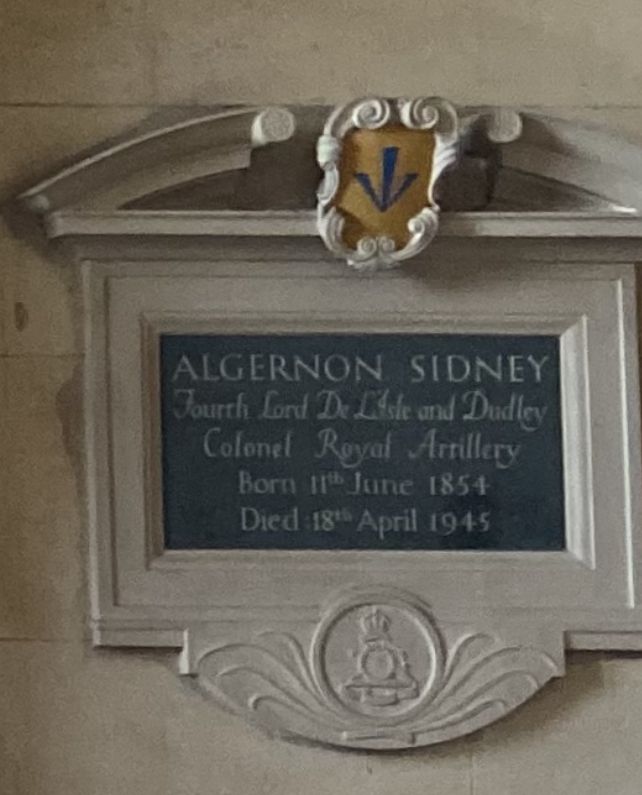January 15 -When Thomas Jefferson identified the sources of the ideas he incorporated into the Declaration of Independence, one of the men he listed was Algernon Sidney (sometimes spelled Sydney). Indeed, at the time of the American Revolution, Sidney was the world's most celebrated martyr for liberty, and his writings and example were inspirations for revolutionaries and radicals in colonial America and elsewhere.
During the English Civil War, Sidney sided with the Parliamentarians, and while serving in Parliament he supported the execution of Charles I. But when Oliver Cromwell dissolved Parliament and became a dictator, Sidney declared him to be a tyrant. Refusing to leave Parliament, he had to be physically ejected.
Sidney was abroad when the English monarchy was restored. Being a well-known opponent of monarchy and having supported the king's execution, Sidney had good reason to be concerned about his safety. He survived 2 assassination attempts while abroad before deciding to return to England. Several years later, after being implicated in an anti-Royalist plot, Sidney was arrested and charged with treason.
His papers were seized when Sidney was arrested and among them was his then-unpublished manuscript "Discourses Concerning Government." In his book Sidney argued legitimate government requires the consent of the governed and citizens have a right to overthrow and replace a tyrannical ruler. One historian has called Discourses Concerning Government "the textbook of the American Revolution."
English law required 2 witnesses for a treason conviction and there was only 1 against Sidney. The trial judge solved the problem by declaring that "Discourses Concerning Government" was the 2nd necessary witness. He found Sidney guilty and sentenced him to death.
Sidney argued his conviction was illegal, but once he saw his death was inevitable, he went out unbowed. "We live in a time when truth passes for treason," he declared. And even more defiantly he said, "The King can make a snuffbox from my arse." He was beheaded on December 7, 1683.
A derivation of Sidney's personal motto, "This hand, enemy to tyrants, by the sword seeks peace with liberty," is the official motto of the Commonwealth of Massachusetts. Sidney is one of the namesakes of Virginia's Hampden-Sydney College.
Algernon Sidney was born in London Jan 15 1623, 399 years ago today.''
Contributor: Junior Ramsey (47063838)
January 15 -When Thomas Jefferson identified the sources of the ideas he incorporated into the Declaration of Independence, one of the men he listed was Algernon Sidney (sometimes spelled Sydney). Indeed, at the time of the American Revolution, Sidney was the world's most celebrated martyr for liberty, and his writings and example were inspirations for revolutionaries and radicals in colonial America and elsewhere.
During the English Civil War, Sidney sided with the Parliamentarians, and while serving in Parliament he supported the execution of Charles I. But when Oliver Cromwell dissolved Parliament and became a dictator, Sidney declared him to be a tyrant. Refusing to leave Parliament, he had to be physically ejected.
Sidney was abroad when the English monarchy was restored. Being a well-known opponent of monarchy and having supported the king's execution, Sidney had good reason to be concerned about his safety. He survived 2 assassination attempts while abroad before deciding to return to England. Several years later, after being implicated in an anti-Royalist plot, Sidney was arrested and charged with treason.
His papers were seized when Sidney was arrested and among them was his then-unpublished manuscript "Discourses Concerning Government." In his book Sidney argued legitimate government requires the consent of the governed and citizens have a right to overthrow and replace a tyrannical ruler. One historian has called Discourses Concerning Government "the textbook of the American Revolution."
English law required 2 witnesses for a treason conviction and there was only 1 against Sidney. The trial judge solved the problem by declaring that "Discourses Concerning Government" was the 2nd necessary witness. He found Sidney guilty and sentenced him to death.
Sidney argued his conviction was illegal, but once he saw his death was inevitable, he went out unbowed. "We live in a time when truth passes for treason," he declared. And even more defiantly he said, "The King can make a snuffbox from my arse." He was beheaded on December 7, 1683.
A derivation of Sidney's personal motto, "This hand, enemy to tyrants, by the sword seeks peace with liberty," is the official motto of the Commonwealth of Massachusetts. Sidney is one of the namesakes of Virginia's Hampden-Sydney College.
Algernon Sidney was born in London Jan 15 1623, 399 years ago today.''
Contributor: Junior Ramsey (47063838)
Family Members
Advertisement
Records on Ancestry
Sponsored by Ancestry
Advertisement










